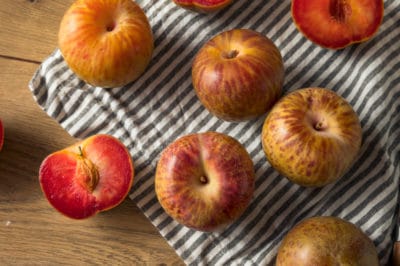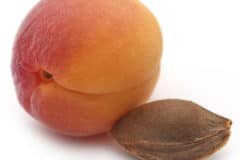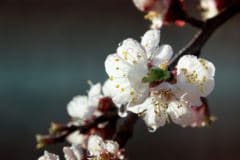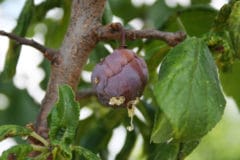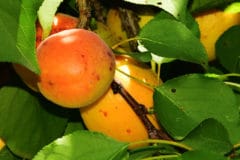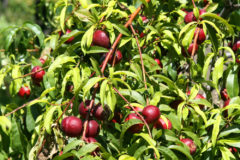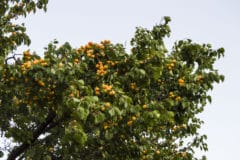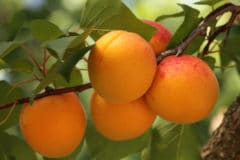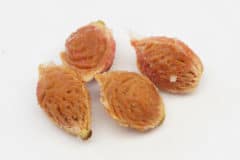Pluots, Plumcots, Apriums, and Apriplums
Each of these are hybrid blends of various types and proportions of plums and apricots. Plumcots and apriplums result in the first generation of crossing these two fruit species. Pluots and apriums are developed by further breeding in later generations.
The name ‘pluot’ is a registered trademark designating a specific succession of cross-breeding resulting in a 75/25 plum to apricot fruit. There are several dozen different varieties of pluot, including:
- Dapple Dandy – Superb flavor of both plum and apricot.
- Flavor Delight – An early season pluot with red skin and pink flesh.
- Flavor Heart – Very dark skin with yellow flesh.
- Flavor King – Tastes like fruit punch with extra-juicy, red flesh.
- Flavor Rich – Medium sweetness with orange flesh.
- Flavorich – Late season, large fruit with yellow flesh.
- Flavor Grenade – Extra-sweet and crunchy fruit ripens late in the season.
- Red Ray – medium sized fruit with orange flesh.
Plumcots and apriplums sometimes occur naturally when plum and apricot trees are planted near one another. The famous horticulturist Luther Burbank coined the term plumcot for this type of tree.
Apriums look and taste the most like apricots of all of these plum/apricot hybrids. Apriums need to ripen on the tree, and the trees are smaller and faster growing than others of these hybrids.
Planting and Growing Pluots
Pluots and other plum/apricot hybrids grow best where apricots grow in USDA planting zones 6 through 9. Pluots need a slightly acidic soil. Test the soil pH and amend it as needed to achieve a pH of approximately 6.5 before planting.
Just as for plums, pluots need well-draining soil. You can test how well the soil drains by digging a hole 1 foot (30cm) deep and wide and filling it with water. If the water level drops between 1 and 4 inches (2.5 and 10cm) in one hour, the soil has adequate drainage.
Plant pluot trees in spring. Fertilize the following year in early spring with ½ pound (.2 kilograms) of 10-10-10 fertilizer. Increase the fertilizer amount by ½ pound (.2 kilograms) each year for the first two years. Pluots often respond well to foliar applications of zinc.
Pluots need cross-pollination from another tree in order to set fruit. The pluot variety Dapple Dandy easily crosses with other pluots. A nearby Japanese plum tree can also provide pollination.
